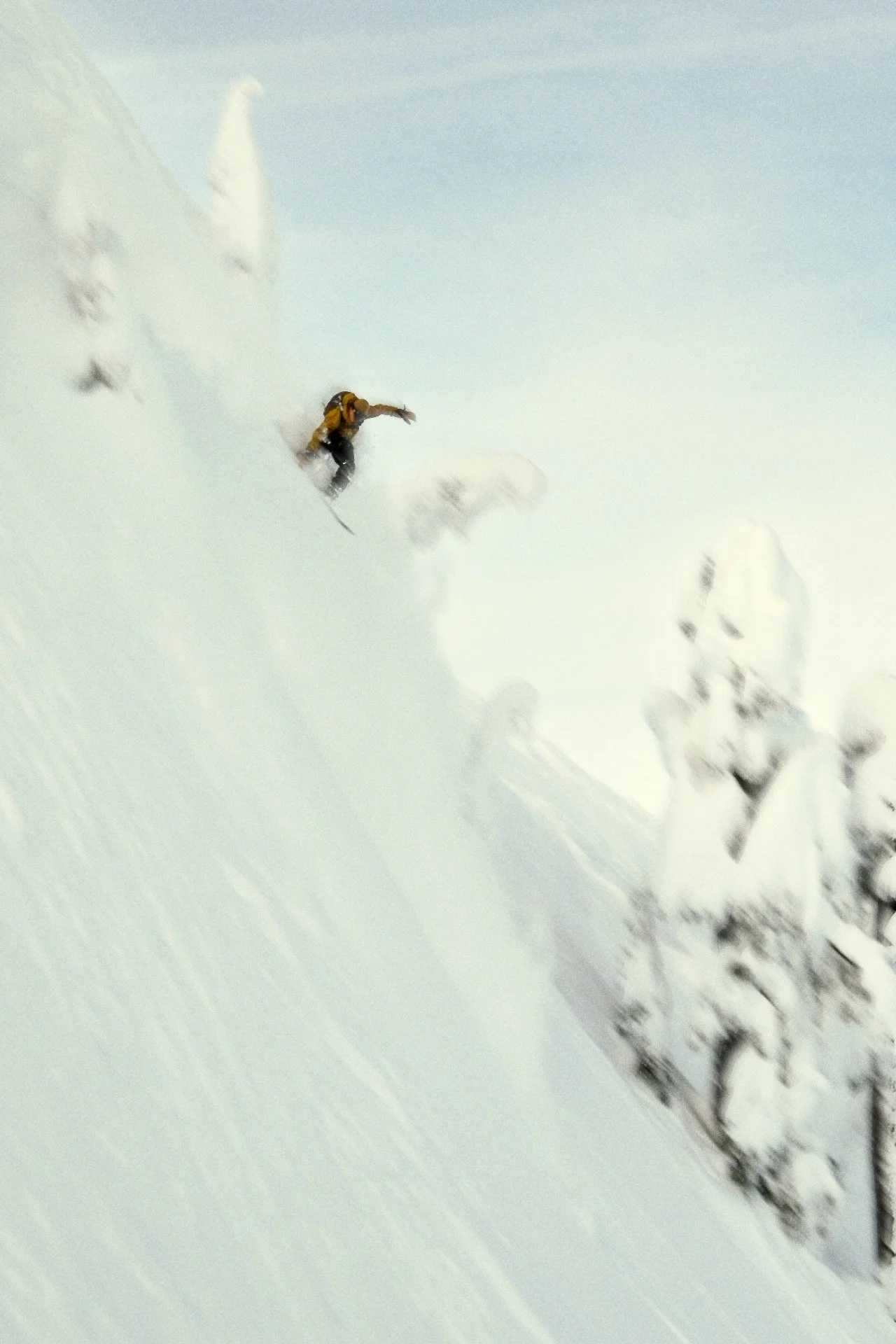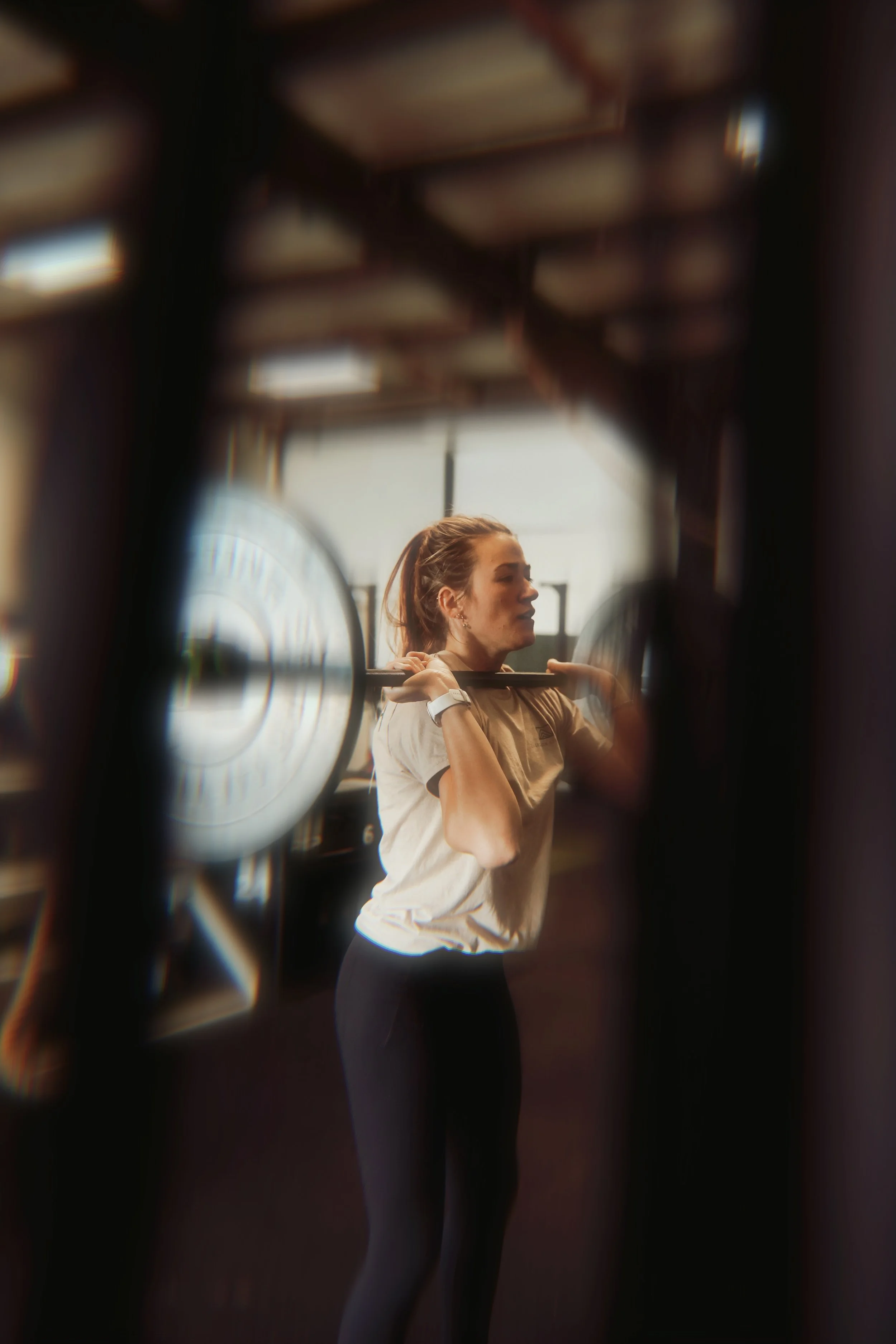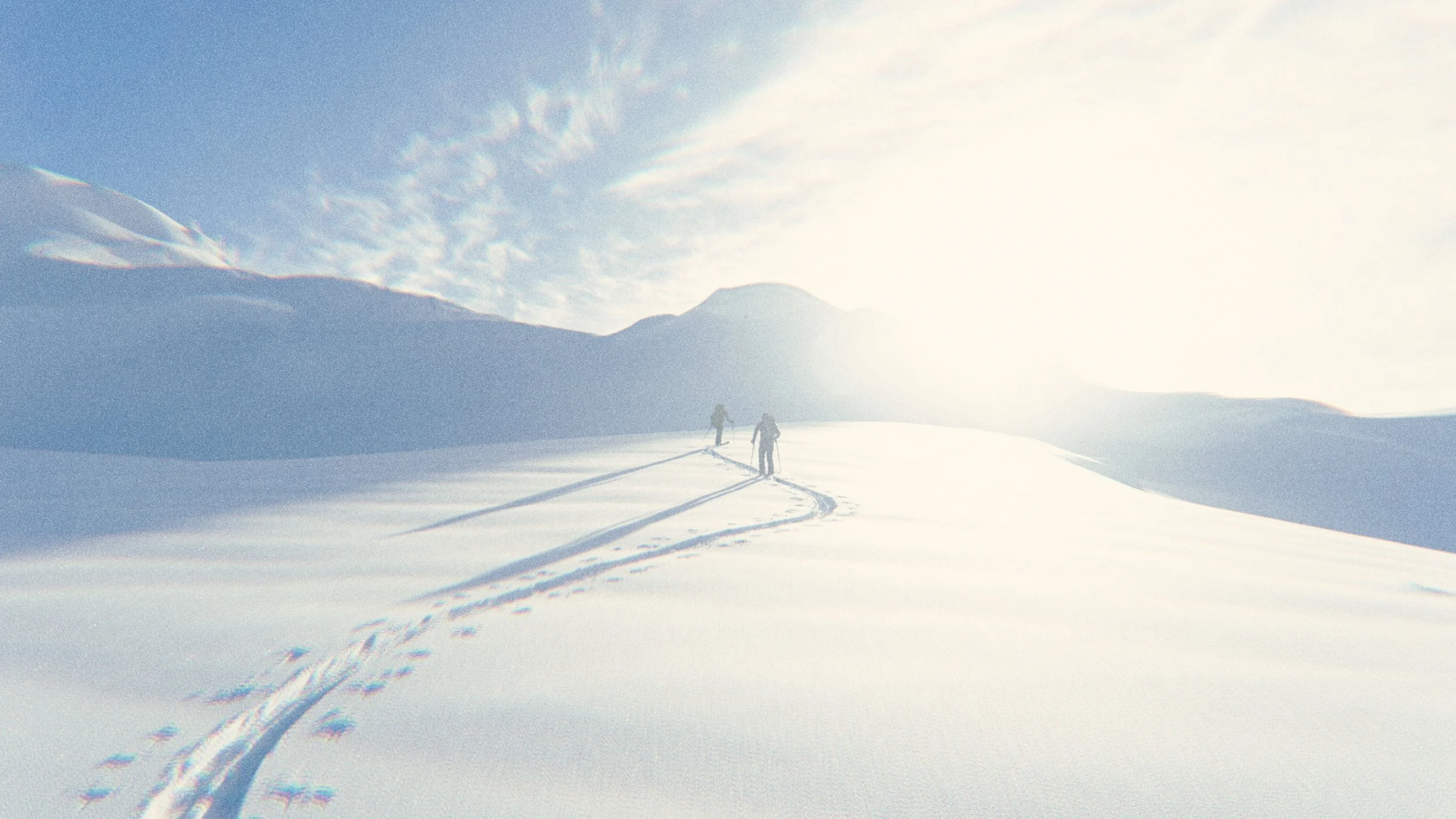
SKI & SNOWBOARD
SPECIFIC TRAINING
Skiing and snowboarding challenge your body in ways that general fitness classes or standard strength training simply don’t prepare you for.
Mountain performance requires more than general fitness—it demands power, strength and stability that transfer directly to the slopes.
Here’s why ski and snowboard-specific training matters so much more than a standard workout routine:
Why Ski & Snowboard-Specific Training Beats General Fitness Every Time
Mountain Strength has Unique Requirements
Traditional training may help build muscle and cardiovascular endurance, but they don’t necessarily replicate the forces your legs and core face on snow. Skiing and snowboarding require your muscles to stay under tension for long periods while constantly adjusting to terrain changes.
You won’t just feel stronger—you’ll ride smoother, stay in control, and last longer on the mountain.
Your programming should focus on:
Eccentric leg strength to absorb bumps, landings and maintain control on descents.
Glute and hamstring endurance for stability and power throughout long runs.
Core and oblique strength to help you stay balanced and strong through every turn.
Explosive power to charge through dynamic changes in terrain
Get Easy Access to your Training
Add to your Home Screen
In your app, there will be an option “Add to Home Screen” that way you can easily access your training at anytime.
Week 01
Welcome to week 1 of our Winter Training Program! This week is all about testing.
We will be finding 3 rep maxes of all our main strength movements as well as testing our conditioning.
Remember; It's week 1, no need to be a hero. Prioritize quality movement over load and understand we are building for the long term.
If you have any questions please leave us a message and we will get back to you as soon as possible.
Day 01
Strength (Determine three rep, Max)
Establish a 3 rep max. Warm up with 1 set of 10 repetitions and 1 set of 6 repetitions. Then take 3-5 attempts to find your 3 rep max.
Front Squat
Warm up with one set of 10 reps and a second set of 5 reps. Then take 3-5 attempts at establishing a three rep max.
Conditioning AMRAP
As many rounds and reps as possible (AMRAP) in 15 minutes
Push up - 5 reps
Sit up - 10 reps
Airsquats - 15 reps
Day 02
Strength
Warm up with one set of 10 reps and a second set of 5 reps. Then take 3-5 attempts at establishing a three rep max.
Barbell push press
Conditioning AMRAP
Perform max amount of pull ups in 2 minutes, then rest for 5 minutes. After resting, accumulate as many calories as possible on the echo bike in 5 minutes.
Pull ups - 2 mins
Echo bike - 5 mins
Day 03
Strength
Establish a 3 rep max. Warm up with 1 set of 10 repetitions and 1 set of 6 repetitions. Then take 3-5 attempts to find your 3 rep max.
Barbell deadlift
Conditioning
00:20 sprints on the echo bike with 1:40 of rest between sprints. Score is total amount of calories accumulated at the end of 20 minutes.
Echo bike
Day 04
Strength
Establish a 3 rep max. Warm up with 1 set of 10 repetitions and 1 set of 6 repetitions. Then take 3-5 attempts to find your 3 rep max.
Barbell bench press
Conditioning EMOM (Every Minute On the Minute)
Alternate between body weight step ups and a 200m run every minute on the minute for 16 minutes. Score is total amount of body weight step ups completed over the 16 minutes.
Step up - 1 min | run - 1 min
Day 05
Strength
Warm up with one set of 10 reps and a second set of 5 reps. Then take 3-5 attempts at establishing a three rep max.
Barbell thruster
Conditioning Interval
Perform max amount of bare bar (no weight) thrusters in 2 minutes, then rest for 5 minutes. After resting, accumulate as many burpees as possible in 5 minutes.
Barbell thrusters - 2 mins
Burpees - 5 mins

SKI & SNOWBOARD TRAINING PLAN
Get Slope-Ready with Evergreen GO.
Download our App to unlock structured skiing & snowboarding programming — designed to build the strength, endurance, and resilience you need for the mountains.
- Step-by-step training schedule tailored for skiers & snowboarders
- Guided strength & conditioning workouts
- Community resources and access to our coaches
How to reduce risk of injury for skiing & snowboarding
Skiing and snowboarding place stress on knees, hips, and back. Smart preseason training helps by:
- Build leg and glute strength with squats, lunges, and step-ups to protect your knees on steep descents
- Train your core and lower back with planks, carries, and anti-rotation movements for stability under a heavy pack
- Add ankle and hip stability drills to improve balance on uneven terrain
- Progress your training gradually
The key to building resilience to injuries is combining strength work, mobility drills, and progressive loading. Here’s how:
Preparing your body in advance ensures your hiking training plan builds strength without breaking you down, so you arrive at the trail feeling confident, not injured.
FAQ’s
-
To get in shape for ski season, focus on a preseason ski training plan that focuses on strength and conditioning. Lower extremity exercises like squats and lunges build strength, while aerobic and anaerobic conditioning prepares you for long days on the slopes. Add some dynamic core and stability exercises to reduce risk of injury.
-
Most winter athletes do best with 8–12 weeks of consistent training to feel fully prepared, but even 4–6 weeks can make a difference. The more time you give yourself, the more you can build strength, improve muscular endurance, and reduce the risk of injuries when the season starts.
-
If you only have a month, focus on high-impact preseason ski exercises: Bodyweight calisthenics like squats, lunges and progressive plyometrics. in addition to core work and interval sessions. Training 4–5 days per week can noticeably boost fitness in just 30 days. Be mindful of progression and ramping up intensity as you go.
-
An 8-12 week ski training plan should balance strength, power and aerobic capacity. Focus on lower extremity strength with functional movement patterns that target quads, hamstrings and glutes. Don’t leave out upper body strength and core to tie it all together. A mix of longer aerobic and more intense anaerobic conditioning should round it out. Aim for 3-5 days of training per week.
-
Start your ski preseason training 8–12 weeks before your first day on the mountain. This gives your body time to progressively adapt and build strength in a safe manner.
-
The best ski exercises focus on leg strength with lower push and hinge movement patterns as well as explosive strength exercises including plyometrics to increase power. Additionally, advanced core strength will help you charge harder and manage dynamic terrain.
-
Improve knee resilience injuries by strengthening glutes, hamstrings, and quads, while also improving hip and ankle mobility. A balanced ski workout plan lowers the risk of ACL tears and keeps your knees stable on the slopes.
-
Yes. Skiing and snowboarding require explosive power, balance, and rotational strength that not all general workouts cover. Ski-specific strength training ensures your muscles and joints are ready for the unique demands of the mountain.
-
Get stronger. Strength and power lead to stability and balance. Keep it simple and focus on compound lifts as well as unilateral exercises. Throw in high intensity conditioning to practice moving while under duress with a high heart rate.






